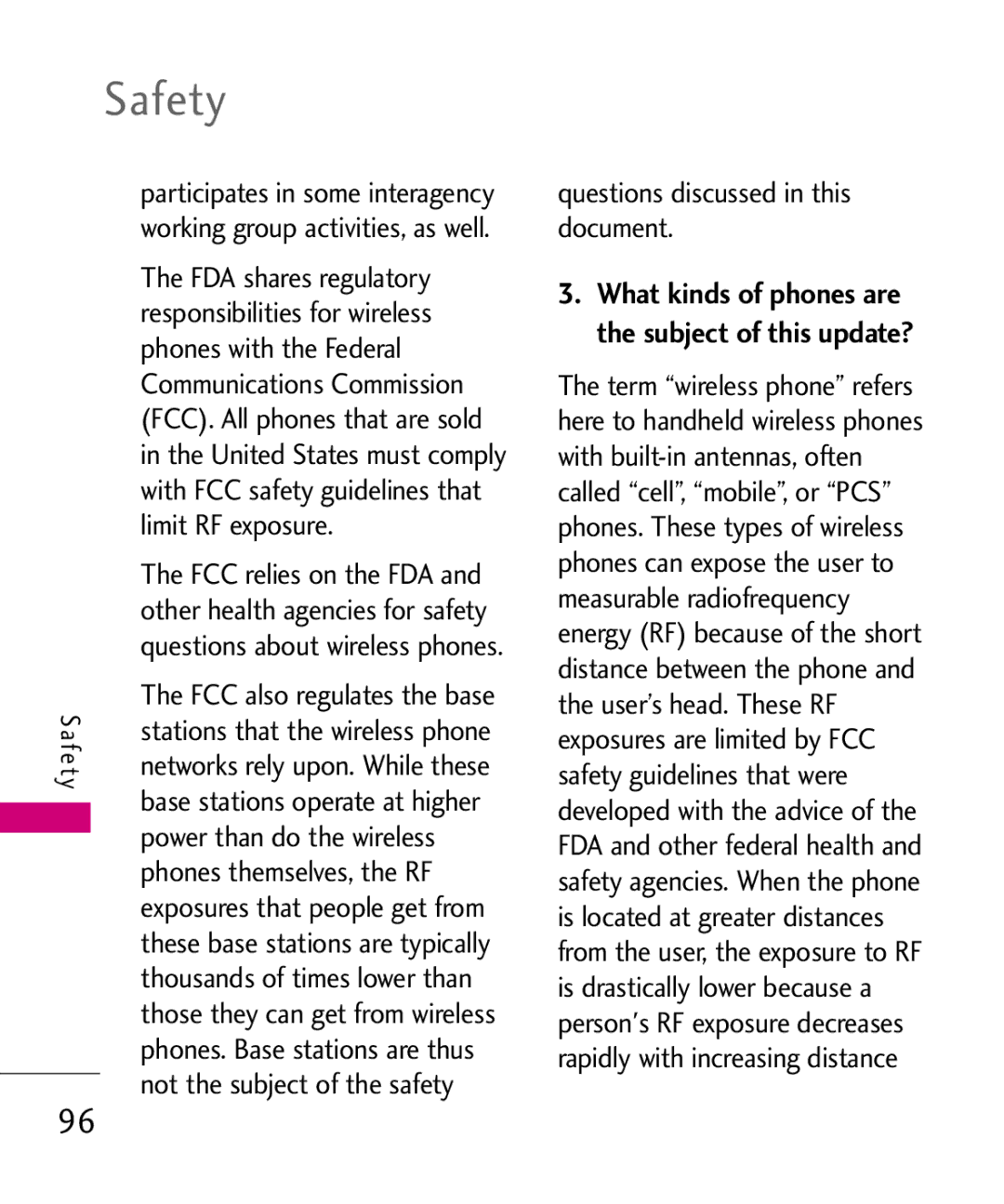Safety
| participates in some interagency | |
| working group activities, as well. | |
| The FDA shares regulatory | |
| responsibilities for wireless | |
| phones with the Federal | |
| Communications Commission | |
| (FCC). All phones that are sold | |
| in the United States must comply | |
| with FCC safety guidelines that | |
| limit RF exposure. | |
| The FCC relies on the FDA and | |
| other health agencies for safety | |
| questions about wireless phones. | |
S af | The FCC also regulates the base | |
stations that the wireless phone | ||
e | networks rely upon. While these | |
ty | ||
base stations operate at higher | ||
| ||
| ||
| power than do the wireless | |
| ||
| phones themselves, the RF | |
| exposures that people get from | |
| these base stations are typically | |
| thousands of times lower than | |
| those they can get from wireless | |
| phones. Base stations are thus | |
| not the subject of the safety |
questions discussed in this document.
3.What kinds of phones are the subject of this update?
The term “wireless phone” refers here to handheld wireless phones with
96
